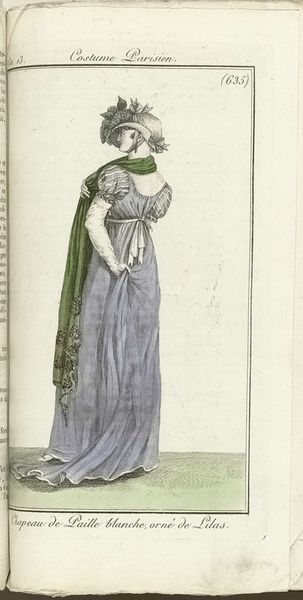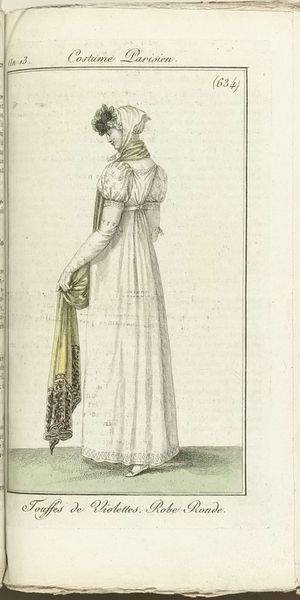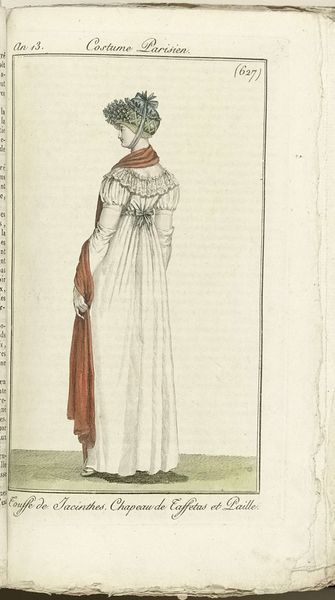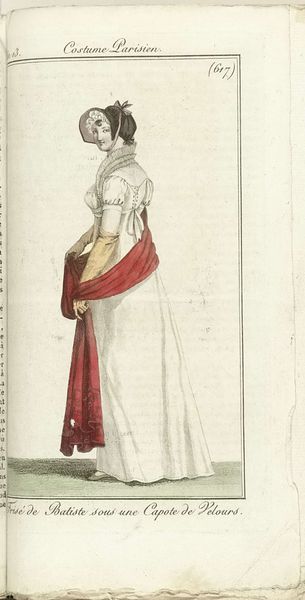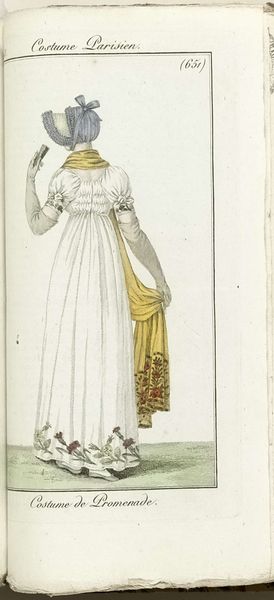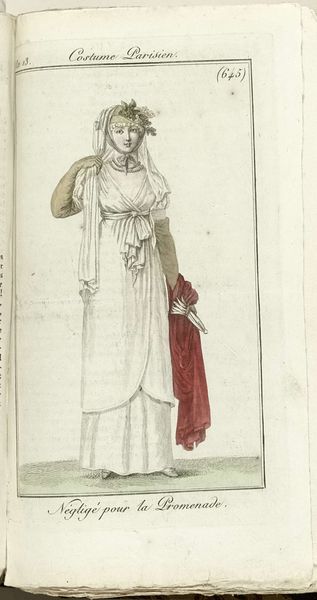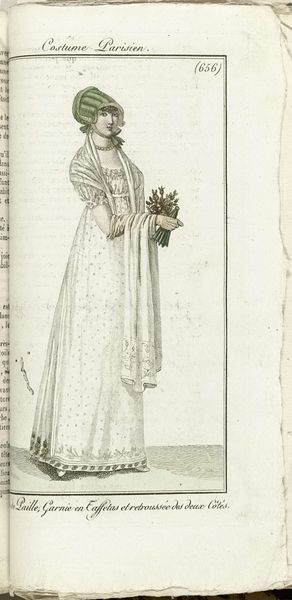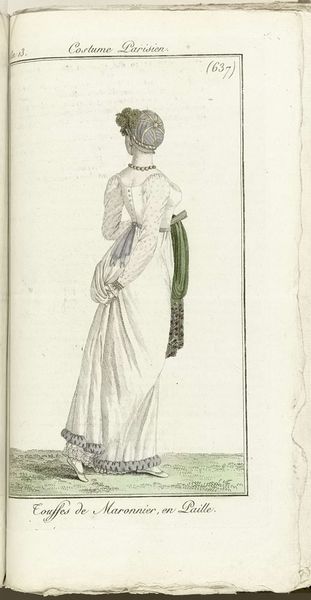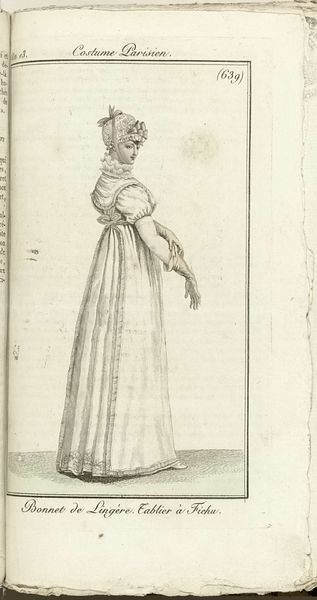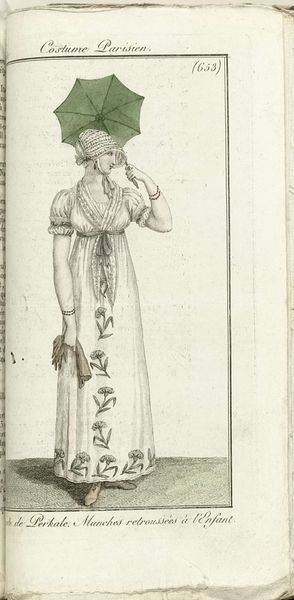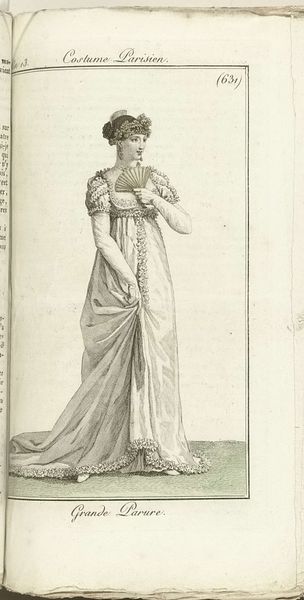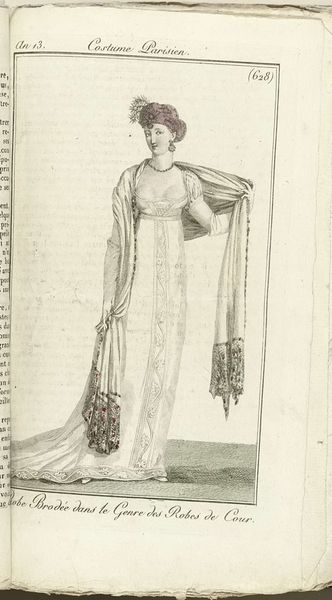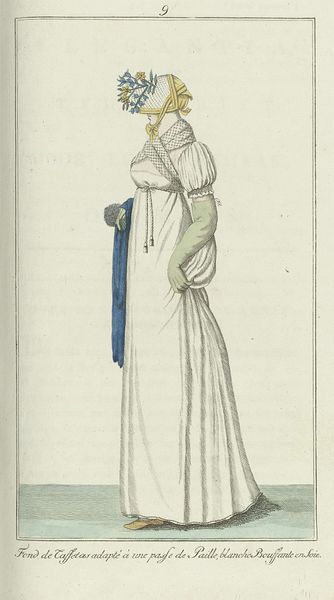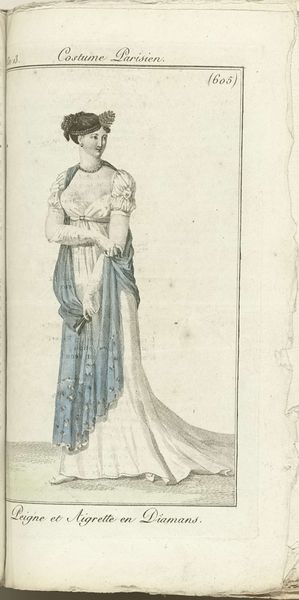
Journal des Dames et des Modes, Costume Parisien, 1805, An 13 (657) Capote en Coquille... 1805
0:00
0:00
horacevernet
Rijksmuseum
drawing, print
#
portrait
#
drawing
# print
#
figuration
#
romanticism
#
genre-painting
#
dress
Dimensions: height 181 mm, width 112 mm
Copyright: Rijks Museum: Open Domain
Curator: Here we have "Journal des Dames et des Modes, Costume Parisien, 1805, An 13 (657) Capote en Coquille...", dating back to 1805. It’s currently held in the Rijksmuseum. This captivating image originates as a print and drawing crafted by Horace Vernet. Editor: It’s amazing, such delicate lines! She almost seems to be gliding. What gets me is the light catching on the folds of her gown; it evokes a sense of airy grace. It reminds me of those morning walks when the sunlight barely kisses the dew. Curator: Absolutely! The medium used points towards a society keenly interested in reproducing and disseminating trends. Consider the role of prints like these in shaping desires and aspirations through the burgeoning fashion industry of the early 19th century. This image isn't merely a portrait; it's a manufactured ideal. Editor: Exactly! And this image being placed within a journal, it feels so approachable, yet constructed. Do you think women would see that as liberating or limiting? It feels like a script—a sartorial cage almost. Curator: Precisely. It encapsulates that tension. We must consider the labour behind textile production; how international trade and potentially exploitative labour practices fed these trends. These clothes were anything but immaterial; their making had real, human costs. The “morning robe” or “Robe du Matin” advertised in the caption itself indicates particular times and locations. Who has access to leisure in these moments, and who produces what enables that leisure? Editor: It feels like there's an unspoken narrative of quiet constraint. You are exactly right; we are viewing the visual epitome of privilege, even innocence. How very strange to consider such layered depths hidden beneath its placid, polished surface! It changes how you look at it. Curator: And that layered look highlights how material culture, art, and social practice are deeply intertwined. Thank you for bringing the material into the room! Editor: Thanks. I find that once I actually acknowledge my initial impression of the scene, it guides my thinking. So often art just asks you to feel something; what that is comes next!
Comments
No comments
Be the first to comment and join the conversation on the ultimate creative platform.
